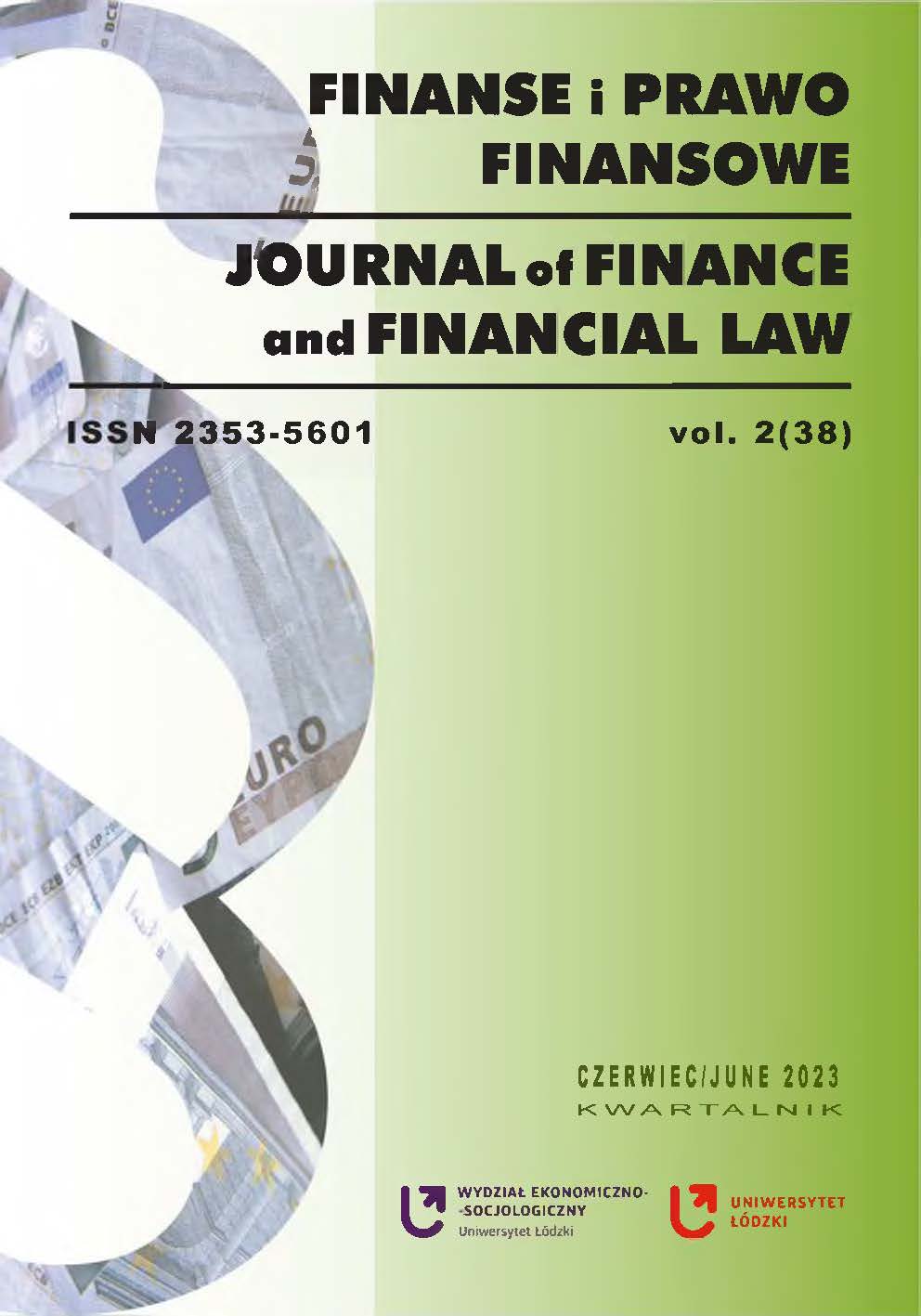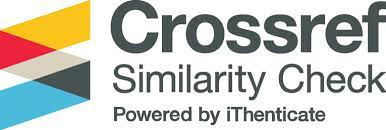The Impact of the Covid-19 on the Way of Using Banking Services and the Perception of Banks in Poland Based on an Empirical Research
DOI:
https://doi.org/10.18778/2391-6478.2.38.05Keywords:
bank, COVID-19, image of banks, Internet banking, banking servicesAbstract
Currently, banks offer a wide range of products and services that are available by Internet particularly after the COVID-19 pandemic. This situation has contributed to changes in consumer behaviour and preferences. This applies to the banking sector and banking services.
The article presents the result of the empirical study. The conducted research shows that the interest in online banking among customers over 50 has increased during COVID-19. The use of the mobile application has also increased in this time. Therefore, security in the network has become important to many customers.
The second part of the survey showed that 26% of bank customers describe the current banking sector as greedy and 20% of respondents indicate that it is a safe branch of the economy. In the period of recent economic events, according to 34% of respondents, this sector is struggling with numerous problems and the stability of many entities may be at risk.
Downloads
References
Ayo, Ch.K., Oni, A.A., Adewoye, O.J., Eweoya, I.O. Ibukun, O. (2016), E-banking users’ behaviour: e-service quality, attitude, and customer satisfaction, International Joural of Bank Marketing, Vol. 34(3), s. 347–367.
Google Scholar
DOI: https://doi.org/10.1108/IJBM-12-2014-0175
Banaszyk P., Gorynia M. (2020), Pandemia COVID-19 a konkurencyjność przedsiębiorstwa, [w:] ICAN Management Review, Normalność 2.0, s. 68–77.
Google Scholar
Bank Światowy (2022), The Global Findex 2021, https://www.worldbank.org/en/publication/globalfindex [Dostęp 05.03.2023].
Google Scholar
Capiga M. (2008), Bankowość, Katowice, Wydawnictwo Akademii Ekonomicznej w Katowicach, s. 137.
Google Scholar
Davis P. (2013) Balancing technology and service is banking’s greatest challenge, American Banker, Vol. 178, No. 35.
Google Scholar
Druga Dyrektywa Rady z dnia 15 grudnia 1989 r. w sprawie koordynacji przepisów ustawowych, wykonawczych i administracyjnych odnoszących się do podejmowania i prowadzenia działalności przez instytucje kredytowe, zmieniająca dyrektywę 77/780/EWG.
Google Scholar
Flejterski S., Panasiuk A., Perenc J., Rosa G. (2008) (red.),Współczesna ekonomika usług, Warszawa, PWN.
Google Scholar
Gospodarowicz, A. (2018), Bezpieczeństwo bankowości internetowej i bankowości mobilnej, [w:] Gospodarowicz A., Gospodarowicz M., Kozińska M., Ślązek E., Zarańska K., Bankowość elektroniczna. Istota i innowacje, Warszawa, C.H. Beck.
Google Scholar
Griffin J. (2002), Customer loyalty, how to earn it, how to keep it, San Francisco, Jossey-Bass.
Google Scholar
Jonas A. (2002), Strategie konkurencji na rynku usług bankowych, Warszawa, Biblioteka Menedżera i Bankowca.
Google Scholar
Jaworski W.L. (1996), Bankowość. Podstawowe założenia, Warszawa, Poltext, s. 137.
Google Scholar
Kozińska M. (2021), Banki centralne Unii Europejskiej jako element sieci bezpieczeństwa finansowego w czasie pandemii COVID-19, Warszawa, CEDEWU, s. 170.
Google Scholar
Meder M. (2006), Marketing relacji w bankowości detalicznej – porównanie roli doradców klientów w Polsce i w Niemczech, Bank i Kredyt, s. 86.
Google Scholar
Narodowy Bank Polski (2021), Zwyczaje płatnicze w Polsce w 2020 roku – podstawowe wyniki badania, https://nbp.pl/system-platniczy/dane-i-analizy/analizy-i-opracowania/zwyczaje-platnicze-polakow/ [Dostęp 28.02.2023].
Google Scholar
Solarz J.K., Waliszewski K. (2022), Pandemia COVID-19 z perspektywy finansów – przenikanie się światów realnego i wirtualnego, Ekonomista, nr 2, s. 213–234.
Google Scholar
DOI: https://doi.org/10.52335/ekon/150804
Srokosz W. (2003), Czynności bankowe zastrzeżone dla banków, [w:] Fojcik-Mastalska E. (red.), Prawo bankowe w zarysie, s. 197.
Google Scholar
Świecka B. (2008), Bankowość elektroniczna, Warszawa, Wydawnictwo CeDeWu.
Google Scholar
Świderska J. (2016) Czynności bankowe jako element określający istotę działania banku, [w:] Bank komercyjny w Polsce , red. Świderska J., Galbarczyk T., Klimontowicz M., Marczyńska K., Warszawa, Wydawnictwo Difin.
Google Scholar
Talecka A., Niczyporuk P. (2004), Bankowość. System bankowy i usługi, Białystok, Wydawnictwo Wyższej Szkoły Ekonomicznej w Białymstoku.
Google Scholar
Ustawa z dnia 19 sierpnia 2011 r. o usługach płatniczych (Dz. U. z 2022 r. poz. 2360, 2640).
Google Scholar
Ustawa z dnia 29 sierpnia 1997 r. Prawo bankowe (Dz. U. z 2022 r. poz. 2324, 2339, 2640, 2707, z 2023 r. poz. 180).
Google Scholar
Związek Banków Polskich (2021), COVID-19, banki i technologia – w jaki sposób pandemia wpłynęła na sytuację w sektorze bankowym, https://www.zbp.pl/aktualnosci/wydarzenia/Banki-i-technologia-w-czasie-pandemii [Dostęp: 05.03.2023]
Google Scholar
(www1) Wyniki finansowe banków w 2020 roku, Główny Urząd Statystyczny, https://stat.gov.pl/obszary-tematyczne/podmioty-gospodarcze-wyniki-finansowe/przedsiebiorstwa-finansowe/wyniki-finansowe-bankow-w-2020-roku,5,25.html [Dostęp: 18.02.2023].
Google Scholar
(www2) Podstawowe stopy procentowe NBP w latach 1998-2022, Narodowy Bank Polski, https://nbp.pl/podstawowe-stopy-procentowe-archiwum/ [Dostęp: 18.02.2023].
Google Scholar
(www3) Bankowość mobilna, PRNews.pl, https://prnews.pl/raporty/bankowosc-mobilna [Dostęp 04.03.2023].
Google Scholar
Downloads
Published
How to Cite
Issue
Section
License

This work is licensed under a Creative Commons Attribution-NonCommercial-NoDerivatives 4.0 International License.














